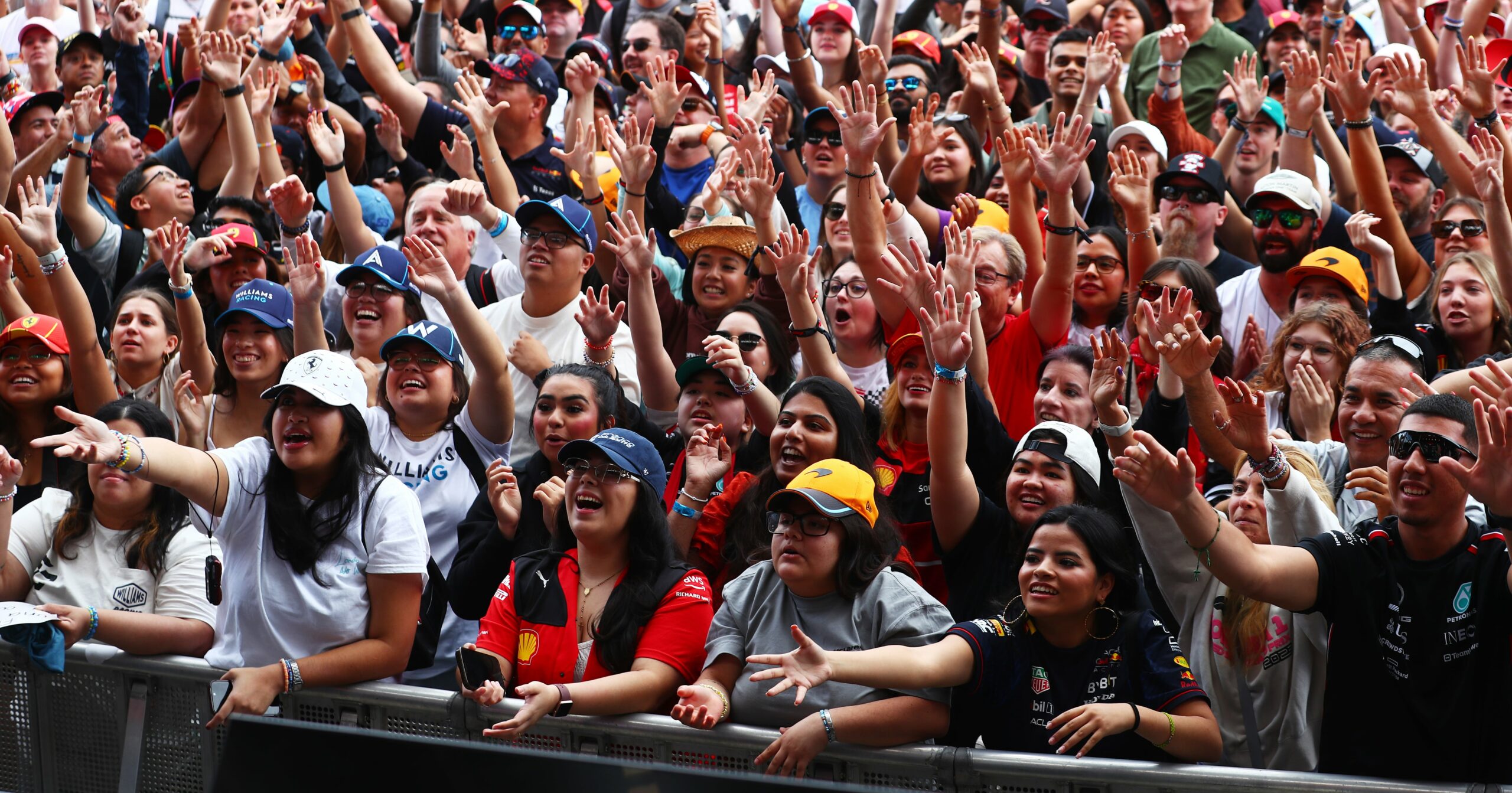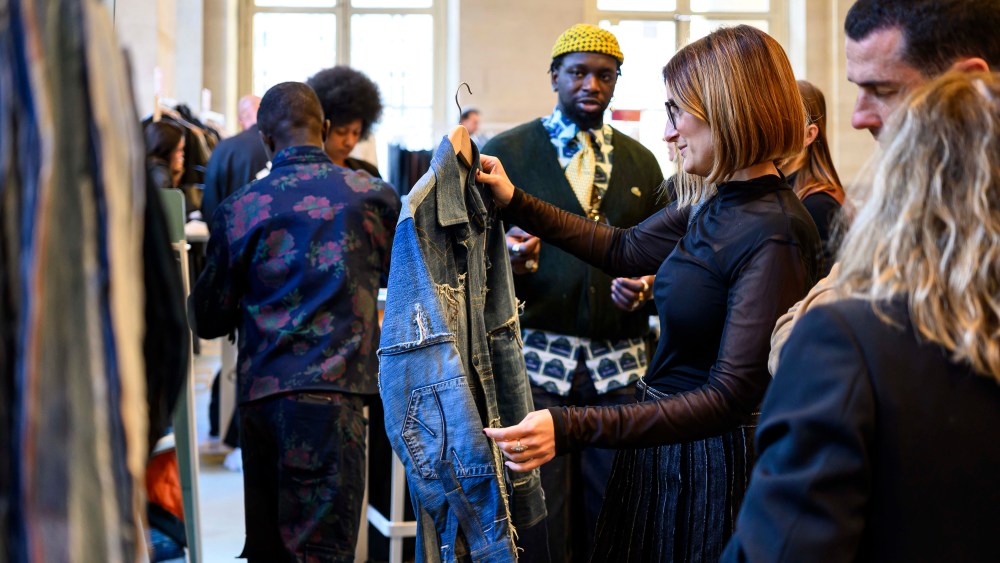F1 has been popular globally since its beginnings in the 1950s. While the auto racing competition always had fans in the US, especially after the first Grand Prix came to the US in 2012, the release of the Netflix docuseries “Formula 1: Drive to Survive” in 2019 kicked off a steep rise in popularity domestically. And according to an F1 Global Survey, women and younger viewers account for much of the sport’s growth.
Stefano Domenicali, the CEO of Formula One Group, says that around 40 percent of fans are now women, per Reuters. And insights firm Interpret found that Gen Z and millennials account for 60 percent of F1’s US fanbase. This influx of younger, women F1 fans is bringing a fresh perspective to a traditionally male-dominated sport – and helping to usher in and elevate the voices of a new era of women leaders within F1.
Last month I attended the United States Grand Prix in Austin, TX where I could take in the weekend’s excitement and connect with old and new women F1 fans. Here’s what they had to say about what’s drawn them to the sport – and what industry experts think is on the horizon for F1.
Why Women Are Becoming F1 Fans
Being at the United States Grand Prix in Austin was electrifying. There was excitement at every turn, extending far beyond the race itself. At the American Express Fan Experience, fans could take in scenic views of the entire track at the iconic COTA Tower, create personalized “driver intro videos” to post on social media, and also discover their unique “driver personality” through a fun and interactive driver evaluation. Eminem headlined the concert stage, and the local food scene turned up the heat as well with plenty of Texas BBQ to be had.
Those unfamiliar with F1 may be surprised by just how popular F1 Grand Prix races are and the distance fans are willing to travel. In an American Express Global Trends Report, 67 percent of millennial and Gen-Z respondents said they plan to travel for sports, and of those traveling for sports this year, nearly 58 percent overall, cited an F1 race, soccer match, or basketball game that’s encouraging them to hit the road. Specifically, for F1 fans, their reasons for wanting to be on the ground are because of the ultimate fan experience and connection the sport provides.
F1 races take place worldwide, in destinations including Montreal, Mexico City, Australia, Japan, Italy, Brazil, England, Miami, and this upcoming weekend’s Grand Prix in Las Vegas. This may be part of what’s drawing younger and women fans to the sport – the global appeal and the opportunity to travel. “Every track is different, which adds to the excitement that other sports don’t have,” says Anisa El-Khouri, an F1 fan and a millennial business executive who lives in Portland, OR.
“Drive to Survive” is often credited for highlighting that F1 is about more than just the race–it’s an aesthetic, a culture, and a community–which has sparked greater interest among female fans. The races are thrilling to watch, and many new fans love familiarizing themselves with the technological side of F1, from the design of the cars to the various racing strategies that teams utilize. “As a fan, I enjoy the science and strategy that goes along with each race,” says Abbey Cullen, an educator from Chicago, IL, and a self-described “dedicated” F1 fan, who recently traveled as far as the Austrian Grand Prix to see the action live and up close.
On the ground, I observed Gen-Z and millennial fans enjoying getting to know the personalities of the drivers; being able to follow them on social media further connects fans to their lives. They also follow the strategic maneuvering and tactics executed by each team, adding another layer of excitement to the sport.
In my conversations with women fans in Austin, it was clear that women fans particularly enjoy seeing and following women leaders in F1. Such is the case for Cullen, who first became interested in F1 after learning about Claire Williams, who’d been the deputy team principal and the public face of the Williams Formula One racing team from 2013 to 2020. As one of only two women to lead an F1 team, Williams’s presence provided representation and connection for women to the sport. “The inclusion of more women behind the teams and the wheel is exciting to witness,” Cullen says.
How Women Fans and Leaders Are Fueling F1’s Future
The growing number of women F1 fans has led to an increased demand for representation of women, which is good news for the sport. The creation of F1 Academy – an all-female, racing series launched by F1 in 2023 – was partially a reaction to the rise in women fandom, and has also grown the women’s fan base further as it’s ushered in a new generation of female talent.
In 2024, American Express became an official partner of F1 Academy and has pledged to elevate women in the sport and support the future of women in the sport. As part of this partnership, the company sponsors driver Jessica Edgar, who races with Rodin Motorsport and will be supporting small women-owned businesses in cities hosting F1 Academy races – all efforts to fuel the growth of women in the sport beyond the race itself.
This commitment is championed by the leadership of Shiz Suzuki, the vice president of Global Experiential Marketing & Partnerships at American Express, who believes that investment in women will be essential to the future growth of the sport. “For Amex, supporting F1 Academy is about supporting women both on and off the track,” Suzuki says. The backing of small, women-owned businesses – from merchandisers to food vendors – reflects the broader impact of women’s presence in F1. “Pushing for this was very important to me. We’ll similarly feature a different female-owned small business that will be local to race locations during the upcoming season,” Suzuki says. “The F1 fanbase is evolving with a growing audience of young women fans, so let’s amplify their presence and have their stories told.” American Express also recently announced a multiyear global partnership with F1, which includes continued support of F1 Academy.
Meleata Pinto, a senior marketing director for a global software company, who as a fan travels the F1 circuit, hopes the growth in women F1 fans leads to more women’s involvement in every level of the sport. “In the future, it would be interesting to see an all-women’s racing team or pit crew. Women can provide design and manufacturing inputs on the cars as well as marketing and merchandising improvements that can help improve team performance on and off the track,” she says, adding that increased women leadership in STEM fields may also lead to more women F1 careers. “The ways in which women can impact F1 are endless,” Pinto says.
“Sometimes in life, you just need to see it to believe it,” Susie Wolff, the managing director of F1 Academy, shared at American Express’s ” A Celebration of Women with Drive” panel discussion earlier this year, referring to how vital women are to the future of the sport: from representation to purchasing power to leadership, women are changing the landscape of F1. “We’re not here just to find the next female Formula 1 driver,” Wolff added. “We want to open up the whole sport, we want to break down the barriers that stop the sport’s progression, and we want to make sure that we’re inspiring the next generation.”
With interest and investment in F1 only gaining steam, there’s every reason to believe that the future will bring even more women to F1, as drivers, leaders, supporters, and fans. And with more women driving change behind the wheel, behind the scenes, and within the fanbase, F1 will continue to evolve, charting a new course toward a more dynamic and inclusive motorsport experience.
Travel and expenses for the author were provided by American Express for the purpose of writing this story.
Ralinda Watts is an author, diversity expert, consultant, practitioner, speaker, and proven thought leader who works at the intersection of race, identity, culture, and justice. She has contributed to numerous publications such as PS, CBS Media, Medium, YahooLifestyle, and the Los Angeles Times.



